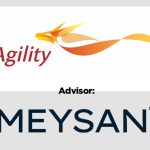Global Immigration Law founder Emel Yilmaz outlines the changes in this feature for the benefit of companies and prospective employees alike.
The Sponsor Licence Route (formerly Tier 2 sponsor licence) enables UK employers with an appropriate sponsor licence to recruit or continue to employ skilled non-British or Irish citizens in a specific job. If a UK-based organisation needs skilled workers for the growth and expansion of their business which necessitates the hiring of foreign workers, it needs a sponsor licence.
Once an organisation acquires a sponsor licence, the organisation is officially permitted to employ skilled overseas nationals for job positions. The organisation will issue a Certificate of Sponsorship for these employees, which legitimises their employment as foreign workers; this helps organisations to retain staff for a longer duration, providing certainty and relevant skills to their business. At the same time, the Home Office relies on the sponsorship regime to prevent illegal working and misuse of the immigration system. This means that the sponsorship (according to the UK’s courts and laws) is a form of a relationship or a bond that shows trust, allowing licence holders to act as gatekeepers to help individuals become employed in British organisations.
In 2021, the Home Office proposed some vital changes to the process of obtaining a sponsor licence following the introduction of a brand-new points system. A white paper provided by the Home Office contained proposed guidelines for sponsors to follow a revamped plan and comply with the new changes. The main goal behind making these changes was to improve and modernise the system of sponsorship in the UK to better enable foreign employees to commence their duties as soon as they can, without delays.
If a UK-based organisation needs skilled workers for the growth and expansion of their business which necessitates the hiring of foreign workers, it needs a sponsor licence.
It is also worth mentioning the new ‘Scale-up’ visa. This route was initially announced in the Spring Budget, with a policy paper entitled ‘UK Innovation Strategy: Leading the future by creating it’. The new Scale-up visa was included as part of its Innovation Strategy, aimed at “opening the UK’s borders to top talent”. The route will be open to people who have a job offer and a salary of minimum £33,000 from a “scale-up” company without the organisation needing to obtain a sponsorship licence. To provide a job offer to these highly qualified candidates, a company or organisation should have an annual average revenue and employment growth rate of more than 20% over a three-year period and a minimum of 10 employees at the start of this three-year period.
The new route enables higher-skilled applicants to apply for a fast-track visa, ensuring greater flexibility in changing employers and access to settled status in the UK after meeting the requirements.
The circumstances leading to sponsorship change in the UK
In its previous incarnation as the Tier 2 sponsor licence, the sponsorship system helped UK HR departments to hire employees based on their needed skills and qualifications. According to the Office for National Statistics, there has been an increase of 9% among firms seeking to sponsor new employees as part of their teams. As of 2021, there were more than 33,952 UK-registered organisations interested in hiring new talent from overseas. Since this number is likely to increase in the coming decade, there is a vital need to improve and streamline the immigration process to help individuals enter the country. Therefore, the 2021 guidelines and processes for obtaining a sponsor licence have been changed.
Moreover, in recent years and especially during the pandemic, it has been observed that the demand for skilled workers increased, driving demand for foreign and Irish workers to meet firms’ growth and enhancement goals. Once an organisation is able to sponsor a deserving individual, skilled people can join new jobs in the UK without hurdles. The major changes outlined above were made to the licence policy with the shift to a new ‘skilled worker’ route from the former ‘Tier 2’ path. The new route is less restrictive compared to its processor.
Due to the disruption caused by the COVID-19 outbreak and subsequent lockdowns in the UK, the Migration Advisory Committee (MAC) issued a report on the impact of the pandemic on employment status. This has meant that that changes to business routes could be implemented by the MAC in 2021 after the first few waves of the COVID-19 pandemic.
In recent years and especially during the pandemic, it has been observed that the demand for skilled workers increased
Publication of the new plan
According to LNB News, in June 2021 the Home Secretary of the UK presented a “legal migration and border control strategy statement” before Parliament to legalise the new migration rules for 2022 and onwards, with the aim of ensuring a digital-by-default system by the start of 2024. There were several major announcements made for the purpose of making changes to the existing rules. For example, new categories have been defined in the new immigration laws to define the entry and stay of immigrant workers in the United Kingdom. This refers to a brand-new points-based system introduced in spring 2022 with particular consideration being given to highly educated, skilled, or competent employees. This means that employees who are already holding a job in the UK with a skilled worker rank will have access to a fast-track system.
Moreover, the ‘’Innovator’ route has also been changed and improved. The new Innovator Endorsement Model has been enacted with an aim to promote the new innovator business model and thereby tap into the growth potential of the country. For this purpose, an 'International Sportsperson' system will be introduced that will likely eliminate the existing Tier 5 and Tier 2 sport routes. Moreover, changes in the Global Business Mobility route will also take place. This shows that the immigration department is extremely keen to revise its existing routes no later than spring 2022. The Migration Advisory Committee will also provide more recommendations regarding intra-company routes prevailing in the country so far.
Furthermore, arrangements and amendments have also been made to the existing system in order to ensure that any overseas business routes are optimised for establishing branches in the UK. The online application process has also been improved to ensure the convenience of employees. Applications can be made using a digital-default system available online, thus eliminating the need for many employees to visit physical offices to apply for visas.
Arrangements and amendments have also been made to the existing system in order to ensure that any overseas business routes are optimised for establishing branches in the UK.
In addition, the process has been streamlined in a phased manner. For EU applicants, the ‘chip checker’ is used for certain categories. For non-EU citizens, the biometric provision has been added and increased. All graduate route applicants will also be required to file their application via the online system. If and when their applications are approved, they will receive a biometric residence permit that will authorise them to travel to the UK for the purpose of work (according to Richmond Chambers 2022).
On top of the graduate route, the International Sportsperson routes are also improved and amended. For instance, the former route contained several questions to be answered on application forms. The number of questions is reduced in the current system in order to help applicants flexibly meet the requirements of the immigration department. This means that applicants with GCSE/A Level or Scottish Higher in English need only prove that their ability to speak and interact in English is not below the requirement to succeed. In some cases, the system also provides an opportunity to applicants to apply and upload their forms and documents from home.
In family and private life routes, a similar approach will be used to streamline the process more easily. This means that significant changes to sponsorship schemes have also been introduced in the light of the new principles:
- The end-to-end process has been accelerated.
- The experience of the sponsor and the employee has been improved through the implementation of a convenient sponsor system.
- The burden previously faced by sponsors and applicants will be reduced to help them maintain their licences, offering transparency in the whole process.
- The system has been improved to prevent abuse to the applicants and their family members. This ensures that the risk management is conducted more effectively by the system without harming any applicants.
- A service will be established to facilitate the interests and wellbeing of small businesses.
- New checking tools for skilled workers have been introduced, such as the Skilled Worker Eligibility Checker.
- A new Salary Check system has been introduced to ensure that the newly hired employees are paid on time and no worker is deprived of their current deserved earnings. This also checks the amount employers are paying to their workers.
- A roadmap will be implemented in summer 2022 that will enable all applicants to make all visa applications through their personal computers or hand-held devices. A new HMRC system has been introduced to identify sponsors in order to provide a quick approval.
- The plan also includes offering a new dashboard to sponsor organisations in the UK to successfully manage several sponsored workers. This will also ensure that feedback on their visa applications is also received appropriately.
- Finally, in order to facilitate sponsors and applicants, trust ratings for sponsors have also been developed. These will be based on the track records of employers, allowing a differentiated approach to sponsorship.
Electronic travel authorisation will also be made possible for Irish and non-British people, according to the white paper. These will be applicants who do not hold a visa prior to 2025. By summer 2021, the paper states that all Border Force staff can use the technology to check the names of the applicants who have applied through the system and are given a status under the EUSS.
Major changes introduced in the sponsor licence procedure
Although the new route of obtaining a sponsor licence is structurally similar to the old Tier 2 route, there are many differences that organisations should consider. In the MAC’s 2018 report, for instance, it was stated that the annual limit on certain sponsorship certificates had been suspended. Applicants were advised to make a request on the fifth day of each month and must wait until the next month to receive a response.
The criteria of the system have now been strengthened as part of the new points-based immigration system. Since many employers were not able to sponsor skilled professionals last year due to reaching the cap, many nurses and healthcare professionals struggled to enter the UK. Because there was a huge pressure on employers to tackle monthly allocations, the government was forced to disqualify doctors and nurses using the post-Brexit immigration system. Now, however, the total time taken to process the sponsor licence has been reduced to almost four weeks. The sponsor routes have also changed in the new latest guidelines to reflect the distinction between ‘workers’ and ‘skilled workers’.
The criteria of the system have now been strengthened as part of the new points-based immigration system.
Sponsoring a foreign worker under the skilled worker route
As mentioned, the ‘workers’ and ‘skilled workers’ routes are vital for companies in the UK that depend on the sponsorship of foreign workers. They are an essential step towards hiring non-British or Irish workers to meet the ongoing shortage of skilled and unskilled labour. For work purposes and working in the United Kingdom, these are the safest and most popular routes for all overseas recruits to follow. The routes are also applicable to follow for non-British employers if they want to hire any citizens from outside the United Kingdom.
The requirements of eligibility for non-British companies are non-exhaustive and the skilled worker option also provides significant opportunities for employees to settle in the country for a longer period. The post-Brexit points-based immigration system is less restrictive than Tier 2 and meets a lot of obligations. For example, the annual limit for obtaining a Certificate of Sponsorship has now been suspended. Moreover, in the previous system of Tier 2, the RQF Level 6 requirement compelled skilled workers to have at least a graduate level education or possess an A level or RQF Level 3 qualification. There is also further good news for skilled workers in that the former Resident Labour Market Test has also been excluded from the criteria to obtain a licence. However, the minimum wages guaranteed under the previous system were slightly higher; they have now been reduced from £30,000 to £25,600.
In addition to these changes, more amendments have been incorporated to the process of securing a sponsor licence. For example, “a length of stay of six years” has been removed as a requirement, in addition to the 12-month cooling-off period. It is possible to switch from intra-company procedures and pathways.
[ymal]
On 1 December 2020, the Tier 2 category that had been in use for many years was fully eliminated and replaced by the latest guidelines, allowing skilled workers to enjoy a streamlined process to obtain their sponsorship licences. Existing or current Tier 2 licence possessed by these employees have also been converted and transferred into new licences under the category of ‘Skilled Workers’.
How to apply for a licence under the new rules
Additional changes to the sponsor policies will also be announced by 2022 and 2024 in order to further modernise the process. Recent news indicates that further policies will be tweaked and improved to form a brand-new system via three IT delivery packages that will be implemented by 2023 and 2024. For instance, UK citizens will be eligible to apply for a licence from the Home Office. However, foreign skilled workers applying from other countries will first need to request a ‘defined’ Certificate of Sponsorship from the Home Office. This does not mean that getting a Certificate of Sponsorship will ensure their employment with a particular employer.
When applying for a licence under the ‘Temporary Workers’ category, crucial guidance about the rules and procedures is best sourced from the UK Visas and Immigration website (gov.uk) because the eligibility criteria is not defined in statute laws. However, there are additional rules for organisations that accept applications under this category. Among other examples, the organisation should assess the eligibility for each route it wishes to take and make the related changes to its HR systems. Moreover, sponsors can also challenge any refusal of a licence in the case of an error discovered in the processing (Taylor 2018).
Emel Yilmaz, Founder
Suite 58, Grove Business Centre, 560-568 High Road, Tottenham, London N17 9TA
Tel: +44 02080 176398
E: emel@global-immigrationlaw.com
Global Immigration Law is a London-based firm that gives legal advice to organisations and individuals on employment-based immigration. Among their areas of expertise are visas, sponsor licenses, administrative review and immigration compliance training.
References
Clarkslegal.com. 2022. Hospitality shortage: Sponsorship Licence to recruit overseas Skilled Workers - Legal Updates. [online] Available at: <https://www.clarkslegal.com/Blog/Post/Hospitality_shortage_Sponsorship_Licence_to_recruit_overseas_Skilled_Workers> [Accessed 10 February 2022].
Howe, J., 2019. A legally constructed underclass of workers? The deportability and limited work rights of international students in Australia and the United Kingdom. Industrial Law Journal, 48(3), pp.416-446.
Richmond Chambers. 2022. The Skilled Worker Route - What’s Changing? - Richmond Chambers. [online] Available at: <https://immigrationbarrister.co.uk/the-skilled-worker-route-whats-changing/> [Accessed 10 February 2022].
Sumption, M. (2019). Is employer sponsorship a good way to manage labour migration? Implications for post-Brexit migration policies. National Institute Economic Review, 248, R28-R39.
Taylor, J., & Pagliari, C. (2018). Mining social media data: How are research sponsors and researchers addressing the ethical challenges?. Research Ethics, 14(2), 1-39.








